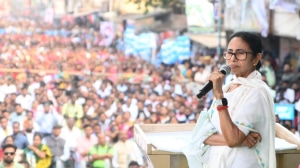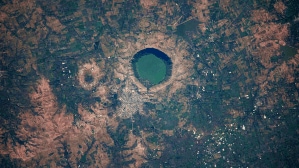Rupee to come under further pressure
NEW DELHI, JUNE 11: Widening trade deficit and shrinking FDI flows will put further pressure on the rupee and it is expected to stabilise ...

NEW DELHI, JUNE 11: Widening trade deficit and shrinking FDI flows will put further pressure on the rupee and it is expected to stabilise between Rs 46.50 and Rs 47 towards the end of the current fiscal, according to a study.
The sudden depreciation of the rupee in the recent weeks indicates that the bright spots built up in the external sector are losing lustre, the study, conducted by the Associated Chambers of Commerce and Industry of India (ASSOCHAM), points out. The rupee has depreciated from 43.68 per US dollar on May 9, to 44.75 on June 9.
The trade deficit, which was sustained at $ 8.6 billion during 1999-2000 despite a 65 per cent increase in oil bill, is expected to jump sharply in the current year, the study said.
In the first month of fiscal 2000-2001, the trade deficit has doubled to $ 1.1 billion as against $ 0.5 billion in the same period last year, it said, adding this was because though exports went up by 30 per cent, the import bill surged by 43.6 per cent.
The jump in import bill is mainly on account of a 25.7 per cent increase in non-oil imports triggered by acceleration in industrial activity and a sharp rise in the international prices of oil.
As against the estimated cost of oil imports of $ 11 billion in the current year, the actual bill is expected to range between $ 13 to $ 16 billion. Moreover, projections by the IMF show that the oil prices in dollar terms would go up by 35.1 per cent in 2000 as against the 38.7 per cent increase in 1999, the study said.
Pointing out that despite the exemplary performance of the software sector, export earnings from invisibles seemed to plateau off during the past four years, the study said, adding this would certainly push the current account deficit and exert a negative impact on the rupee exchange rate.
India would have to struggle hard even to maintain the FDI inflows in the previous years level, it said, adding the latest projections by multilateral agencies show that FDI flow into emerging markets (both developing and the ones in transition) are likely to see a slump in the short run.
Net foreign direct investments to emerging markets, which had gone up from $ 35.4 billion in 1992 to $ 150 billion by 1999, are expected to increase by a mere $ 3 billion in the current year. Not only this, but the level is expected to decline by as much as $ 8 billion in 2001.
As per the IMF projections, the worst hit would be crisis-ridden South and East Asian countries. In case of other emerging markets, including India, the increase in net FDI in 2000 is going to be a bare $ 1.7 billion.
Thus the likely deterioration in both the current and capital account will certainly put greater downward pressure on the rupee in the current year, it said.
Though RBI may be able to reduce the volatility in exchange rates, it was unlikely that the central bank would be able to stand in the way of broad market trends, it said.
MUMBAI: Automobile companies in India are caught in a bumpy terrain. Even as car makers are struggling to drive up volumes following the hike in effective sales tax, they have been hit by another salvo – the sharp depreciation of the rupee.



- 01
- 02
- 03
- 04
- 05




























